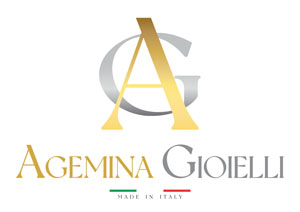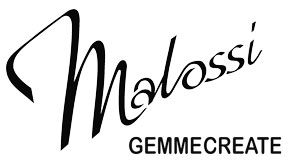Gemology sails over the thin line separating the systematic study of gemstones from marketing. Gemologists are responsible for determining parameters that can affect the value of the stones, such as identification, geographical origin or possible treatment determination. Further to these investigations, the trade will be able to better evaluate the materials. Much ink and many words have been used to provide informations as well as very specific details about a huge variety of gemstones, including the more commercial ones. Such abundant and accurate documentation is accompanied by countless images showing details of inclusions gemologists can rely on while preparing their reports.

Organic gems suffer a lack of identification and certification methodology
Gemological studies include both inorganic and organic material, but it seems that this latter branch is dealt with inadequately. At least it can be said that educational coverage of organic gemstones is not as much exhaustive as for other gems. With exception of pearls, organic gems are not supported by a wide literature enabling the gemologists to obtain comprehensively the needed informations on how to identify and grade them. This is certainly the case of coral. Prices have been skyrocketing in the past years and, as a consequence, an increasing number of customers is interested in gemological reports ensuring that their purchases are safe and transparent. Additionally, a correct documentation stating the scientific nature of the organic material, is compulsory in the US and in other countries, where many animal species protected by CITES restrictions are carefully checked. Coral admitted in the trade has many resemblances with protected species and this may cause insecurity in the import operations as well as in business transactions.
In 2015 CIBJO released for this purpose the “Coral Book” offering provisions and guidelines about correct disclosure and application of the regulations adopted to identify and grade corals1. Is this sufficient? Which difficulties are professionals encountering while carrying on their work?
Nowadays gemologists must not consider their researches as full and thorough, unless widening the investigation scope beyond microscopy, with the support of instrumental data such as spectrophotometry enabling them to collect a concrete, reliable and diagnostic feedback. And this cannot pretend to be objective if the identification does not refer to clear parameters as well as to a fully recognized and shared terminology for the trade and the industry. Below, four case stories based on laboratory experience in the process of identification and evaluation, are reported. The intent is just that of initiating a proactive discussion aimed at improving the work of gemologists facing the study of organic gems. What is the most adequate and reliable detection equipment in this specific research process? What kind of information could prove to be misleading? What challenges and hurdles will be encountered? In order to get an extensive and reliable database to start with, 180 elements2 have been submitted to microscopic and spectroscopic investigations by using a Gemmoraman 532 of MAGI Instruments. The specimens belong to the following species: Corallium Rubrum” Sardegna, “Corallium Rubrum” Sciacca, “Paracorallium japonicum” Aka, “Corallium Elatius” Cerasuolo, “Corallium Elatius” Bokè, ”Corallium Secundum” Midway, “Corallium sp” Deep sea, Corallium sulcatum Misu.
Case 1. Corallium Rubrum, a description of filling procedures
The market frequently calls for “Corallium Rubrum” reports. This species is known in the trade as “Sardinia” (Sardegna), or more commonly as “Mediterranean”, and is a real best seller, therefore quotations soared very sharply in the last decades. If analyzed by Raman Spectroscopy Corallium Rubrum exhibits its most important peaks at about 1520 cm-1 and 1132 cm-1 and smaller ones at 1297 cm-1 and 1020 cm-1 (Figure SP1). Yet some confusion remains about how to disclose and report alterations and treatments. Firstly, after polishing the beads have been “oiled”. Oil slightly intensifies luster but can not hide the surface defects (Figure 1). On the contrary, it emphasizes them and improves refraction of the light on the plain surface, to the detriment of the area where the defects (the so called “caniature”3) are located (Figure 2).


After that, the same beads have been wax-treated with the purpose of reducing surface irregularities such as minor fissures or shallow holes. The process is quite noticeable and the most consistent defects can be neatly observed in deeper cavities (Figures 3 and 4).
The last manipulation (the so called “puttying”) we have observed consists of fillers, mostly made of a variety of waxy substances added with glass ionomer cement and possibly with coloured pigments, a quite intrusive method at all. As a matter of fact, the images (Figures 5 and 6) clearly show that the holes are completely filled, hiding all of the blemishes, regardless of their size and consistency (Figures 7 and 8).
The detected spectra in the impregnated zones do not show divergent peaks if compared with the unfilled ones (Figure SP2). All of the above treatments are not durable and the performed process is reversible: over time defects appear again, clearly visible. How should they be defined? The Coral Book considers the filling of minor fissures by wax as an alteration requiring specific information, but no obligation to define the gem a “treated” coral, is set. Yet, even though the filler is a colourless wax, this obligation exists when the filled surface is wide and predominant, as in the case of extended fractures and deep cavities being present. It does not matter much whether the filler is easily detectable at naked eye or the manipulation results in a so poor and esthetically ineffective treatment, proving to be useless even for deceptive purposes.








Case 2. Coating
Obviously the pitfalls in the identification and correct disclosure process of alterations and treatment of coral does not end with those listed above. Analysts are likely to come across cases of uniform and nice beads apparently very similar to red Mediterranean coral, like the ones submitted to our lab in a strand, to the total weight of 287 grams (Figure 9) and made up of graduated faceted barrels.
The impression is quite a deceptive one (Figure 10), but a careful observation, one by one, of the elements, shows meaningful variations (Figure 11). Under the microscope the surface reveals different features if compared to natural coral (Figure 12), and the Raman spectrum points to some kind of resin-like coating, even though additional Raman spectra show the diagnostic peaks of Corallium Rubrum in the area where coating is thin (Figure SP3.1 and 3.2). The specific gravity is also by far lower than common corals. Moreover, if scratched by a tool, the surface material smells like burned plastic.







What are we dealing with?
The base is a piece of spongy natural coral rough (Figure 13), without any commercial value, presenting many deep cavities in very different colours (Figure 14) as well as dark stains on the surface. A waxy and dense substance is then dripped over so as to dye (Figure 15) the natural base (Figure 16).
The Raman spectrum proves the base to actually be Corallium Rubrum (Figure SP4). The Coral Book describes this process as coating, a strong modification of the original colour and consequently of the appearance of corals. In this case it is compulsory to report the beads as “treated”4 by filling, regardless of the fact that the base shows its natural colour.





A reference scale to grade the intensity of filling
Since 2015, as we have seen from the above mentioned examples, a code of regulations concerning the proper nomenclature apt to disclose the characteristics of coral, is available. Gemologists can refer to it whenever called to describe alterations affecting the gem. In so doing, transparency in communication between analyst and customer will be greatly boosted. A reference guide has been prepared, as shown above, listing the above mentioned cases. The original terminology introduced by CIBJO is given on the right side of the table. For a better comprehension of the increasing intensity of these manipulations, these have been compared to the treatments of corundum var. rubies, gemstones many gemologists are more familiar with (Tab. 1).

At first this purely descriptive correlation may seem daring or not appropriate. It should not be read therefore as a comparison between the same features, but as a simple example to show the increasing levels of intensity of filling treatments. Like rubies also the value of corals depends on the type of treatment, varying according to its increasing or decreasing grade. Corals showing coating of the surface, like in the last case reported, have ridiculous quotations. Many traders are not familiar with the impact of the alteration when they have to evaluate corals, while most probably they are more informed about rubies.
One of the purposes of this article about coral is just preventing what happened with glass filled rubies. Disregarding their own responsibilities unscrupulous gemologists have identified them as “Natural Corundum var. Ruby”, adding deceptive details as “flash effect”, typed in small size fonts. Even though the Coral Book suggests definitions like “impregnation with plastic or similar substances”, a less generic description would be recommendable in order to render the report more easily understandable to a wide public.

Case 3. Can corals be defined as “Angel Skin”? If possible, how?
A rather thorny case came out as our lab received for testing a pink coral strand, believed (by the customer) to qualify as an “Angel Skin” quality coral. Actually, the graduated perfectly round plain strand was gorgeous, the total weight being 98.36 grams (Figure 17), 6.67 mm to 13.82 mm in size. The hue was a nice pale pink with very few spots, shading in a slightly more saturated pink with some beads turning to a light orangy colour. All the spectrophotometry data collected in photoluminescence did not supply clear indications on the provenance (Figures SP5.1 and SP5.2) as every bead was exhibiting similar but not identical spectra, characterized by a strong luminescence obstructing the acquisition of information but for long reading times. The microscope observation did not help much either, just showing some blemishes such as small holes and cracks without any surface treatment of the sort. According to the explanations of the Blue Book , “Angel Skin” must be acknowledged as a type of Corallium Elatius, known in the trade as “Bokè”. It is very similar to “Misu” and “Deep Sea”. Often it happens that these two species, more easily available and cheaper, are cleverly mixed with “Bokè” and sold as such.
Customers submitting this material for identification would be happy if the term “Angel Skin” could be used in the reports. In the described case only a more generic attribute has been assigned, “Coral from Pacific Ocean”. In fact, the diversity of the acquired spectra and of the chromatic defects of the beads did not allow the lab to determine with certainty for each bead the species and the fishing area. But in case the strand of “Bokè” was uniform, can the gemologist assign the attribute “Angel Skin” or not? Again the Blue Book is clear: when producing written reports, it is compulsory to identify the genus “Corallium” or “Paracorallium” and, if possible, the species (Elatius, Rubrum and so on). But in absence of scientific criteria to determine the quality type “Angel Skin”, we currently do not have the prerequisites to establish which coral can so be defined5.
Trade names are important for coral too. While at present the Coral Book is not disregarding the commercial names, yet it does not completely acknowledge them and it requires that they are submitted to CIBJO for approval. The case “Angel Skin” can be therefore compared to what corundum is experiencing when quality attributes, such as “Pigeon Blood” for rubies or “Royal Blue” for sapphires, are used. Until a fully recognized board determines what are the conditions and the chromatic and chemical criteria for coral to be qualified as “Angel Skin”, this attribute can not be used in certification terminology.


Case 4. “Sciacca”, a mysterious fossilized coral
The last – but not least – subject we intend to deal with here, is about an analysis of a hand weaved coral bead weighing 140.4 grams (Figure 18) consisting of nearly round beads with a size range from 3.0 mm to 3.5 mm. The colour was a “salmon” turning, in some areas, into light brown. When observed under magnification, these colour differences looked like “burns” (Figures 19 and 20) more noticeable in the cavities or in the surface defects rather than on the plain and smooth areas (Figure 21). It should be assumed that these “burns” originated prior to the cutting process.




Then the material has undergone a Raman spectrophotometry investigation and the spectra revealed to be more similar to those of “Corallium Rubrum” than to those of corals originating in the Pacific area. The slightly orangy colour might lead to “Corallium Elatius” (Cerasuolo) but instruments clearly deny this suggestion while microscopic observation gives evidence of a possible subfossil origin of the material. All this implies a clear diagnosis as “Sciacca” coral. But this term is just missing in CIBJO’s Book, and therefore it cannot be used.
Coral from Sciacca is a exoskeleton of coelenterates deposited in three main banks around what is known as Isola Ferdinandea, a submerged volcanic island in the Mediterranean Sea situated in between Sicilian and Tunisians coastlines. It was intensively exploited from 1875 to 1887. As early as in 1915 these deposit were reported exhausted. “Sciacca” is therefore a fossilized coral showing a typically orange/salmon colour, occasionally yellow/brown or black stained. Brownish zones, resembling “burns” are typical, possibly caused by the oxidizing activity of bacteria which reacted with the iron contents of coral.
The fishing activity made tons of this coral rough available. Today it is considered rare and as a consequence its quotations are very high mostly if sizes are big (due to the typical formation of the banks branches of “Sciacca” are thin and hardly they can be found larger than 8 mm. 10 mm is very rare to be found). How can the reports describe it? No doubt the species indicated by the spectrum is Corallium Rubrum, but the chemical structure shows a fossilization or a sub-fossilization process that should be indicated to account correctly for the specificity of the gem. And this can be legitimately confirmed by the unquestionable geographical provenance which in this case should not be regarded as a subjective opinion. So there are still many routes to be explored for CIBJO to achieve a comprehensive classification of coral types including the neglected “Sciacca”.

Conclusion
The work carried on by CIBJO is a very useful starting point to put things in a better order as far as the coral world is concerned. Yet it can not provide all the time responses to every single question arising during the work of identification and grading. It’s not sufficient to establish a nomenclature for the species and classify the alterations and treatments.
Expanding the research on coral can be a very successful option as market insists in its call for quality awareness and for more detailed informations to define and identify the different corals, especially when the value is rising year after year. The Italian Gemological Review (IGR) intends to work as a connection point for researchers, laboratories and traders alike, concerned with strengthening the knowledge of coral in order to define quality parameters.

Notes
1 The President of the CIBJO Commission in charge of the elaboration of the text annonced, during the CIBJO Congress held in Yerevan, Armenia, in October 2016, a further implementation of the Coral Book, which is currently providing only general indications, offering however no details on species. A new publication entirely dedicated to coral grading, is on schedule and should be released shortly.
2 Currently in the trade, there is no universally accepted protocol of coral classification, assessing the area or the period of fishing. The author is grateful to the companies traditionally involved in coral production and trade (Collaro Salvatore, casa Ascione, Vincenzo Pompilio) for their support and for their specimens.
3 The nomenclature describing cutting styles as well as treatments or other features concerning the quality of corals are often based on the Neapolitan dialect in its variety of Torre del Greco, the capital city of coral. For example the term “caniatura” or “cariatura” indicates a long fissure. It can be translated as crevice.
4 “Treated” coral is an indication that can never be associated with the term “natural”, as stated in the Coral Blue Book.
5 Any indication of geographical origin, according to the Blue Book, is always a subjective opinion of the gemologist.
References
Ascione C. – “Oro rosso. Magie dell’antica arte del corallo”, Napoli, edizioni Altrastampa, 1998. Bruckner, A.W. and G. G. Roberts (editors) – “Proceedings of the First International Workshop on Corallium Science, Management, and Trade”, NOAA Technical Memorandum NMFS-OPR-43 and CRCP-8, Silver Spring, MD 153 pp, 2009.
Bussoletti, E., D. Cottingham, A. Bruckner, G. Roberts, and R. Sandulli (editors) – “Proceedings of the International Workshop on Red Coral Science, Management, and Trade: Lessons from the Mediterranean”, NOAA Technical Memorandum CRCP-13, Silver Spring, MD 233 pp, 2010.
Di Geronimo I., Rosso A., Sanfilippo R. 1993. I banchi fossiliferi di Corallium rubrum al largo di Sciacca (Canale di Sicilia). In: Cicogna F. & Cattaneo-Vietti R. (Eds) Il corallo rosso in Mediterraneo: Arte, Storia e Scienza, Ministero Risorse Agricole, Alimentari e Forestali, Roma: 75-107.
Cooper E.W.T., Torntore S.J., Leung A.S.M., Shadbolt T. and Dawe C. – “Guide to the Identification of Precious and Semi-precious Corals in Commercial Trade”, WWF and Traffic, 2011.
Karampelas S., Fritsch E., Rondeau B., Andouche A. and Métivier B. – “Identification of the Endangered Pink-to-Red Stylaster Corals by Raman Spectroscopy”, Gems & Gemology, Vol. 45, No. 1, pp. 48-52, 2009.
Smith C.P., McClure S.F., Eaton-Magaña S. and Kondo D.M. – “Pink-to-Red Coral: A Guide to Determining Origin of Color”, Gems & Gemology, Vol. 43, No. 1, pp. 4-15, 2017.
Tsounis G., Rossi S., Grigg R., Santangelo G., Bramanti L., Gili J.-M. – “The exploitation and conservation of precious corals”, Oceanography and Marine Biology: An Annual Review, 2010, 48, 161-212
Article by Francesco Sequino, published on Rivista Italiana di Gemmologia – Italian Gemological Review #2, September 2017.
















